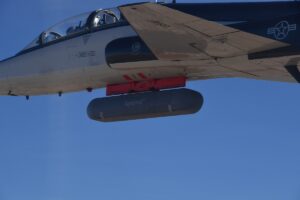
The U.S. Air Force conducted tests last month of an Air Force Research Laboratory position, navigation and timing (PNT) AgilePod prototype for use in GPS-denied or limited environments, Air Force Materiel Command (AFMC) said last week. The pod flew eight sorties between Nov. 1-10 from Edwards AFB, Calif., on a T-38C training aircraft--sorties that included "the first test of the PNT AgilePod on a high-dynamic-range platform, the first test of fully-remote interfacing and alt-PNT data transmission, and the first demonstration…














